Without borders
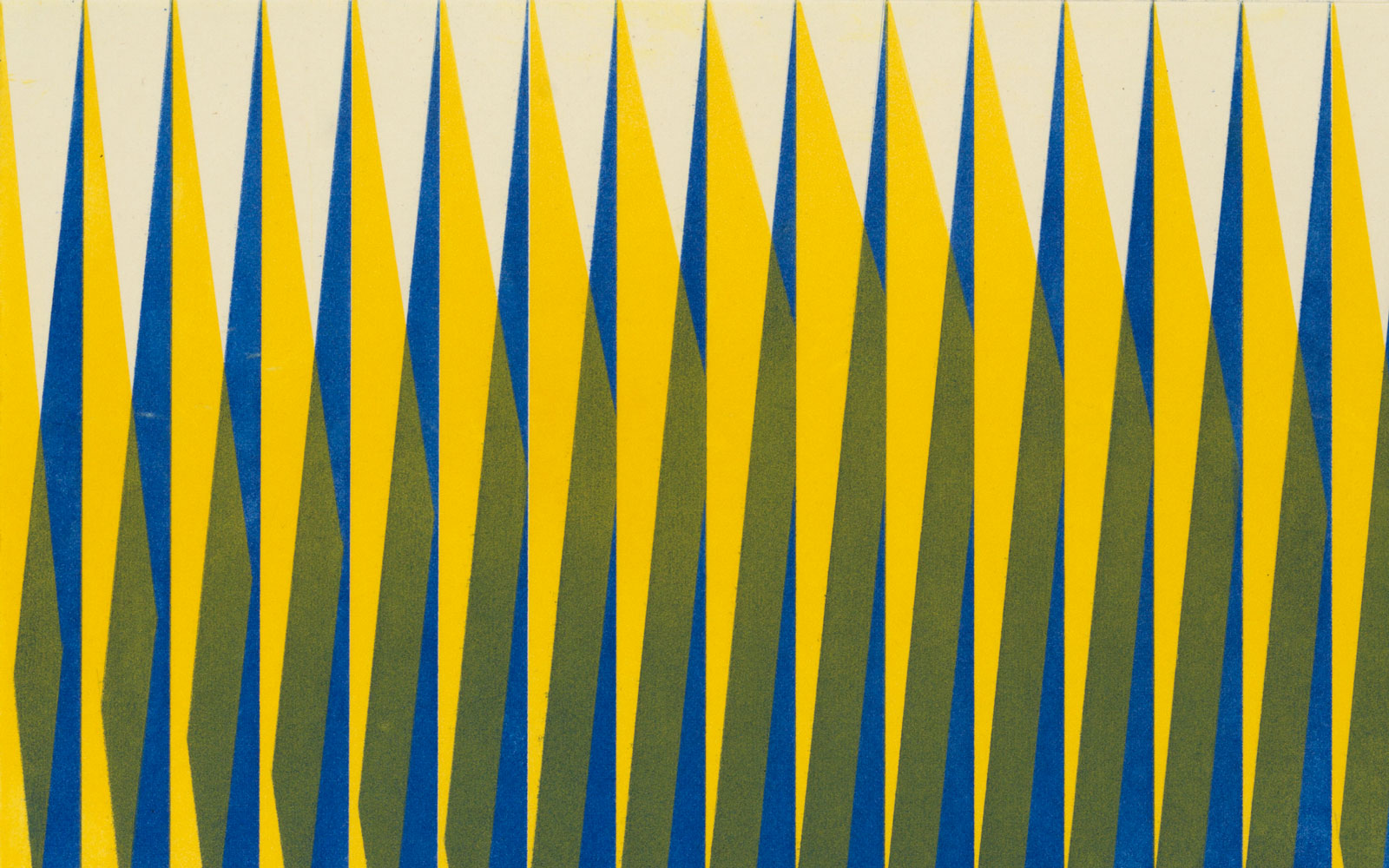
Hashim Samarchi (Mosul, 1939) arrived in Lisbon in 1967 with his Iraqi friends, artists Rafa Nasiri and Salim al-Dabbagh, with the intention of attending a course at GRAVURA – Portuguese Printmaking Cooperative. The Calouste Gulbenkian Foundation grant, awarded through the Society of Iraqi Artists, strengthened the relationships between Lisbon and Baghdad, which the Foundation had fostered since its creation in 1956.
This was the first time the Cooperative had received foreign artists for the purposes of working and developing art within their workshops. Subsidised by the Foundation, the course was led by Alice Jorge and João Navarro Hogan. In the final evaluation report, Alice Jorge highlighted the superb professionalism of the Iraqi artists, who during their time in Lisbon became familiar with ‘all the processes of printmaking,’ developing aesthetically, establishing good relationships with the Portuguese artists and holding three group exhibitions.
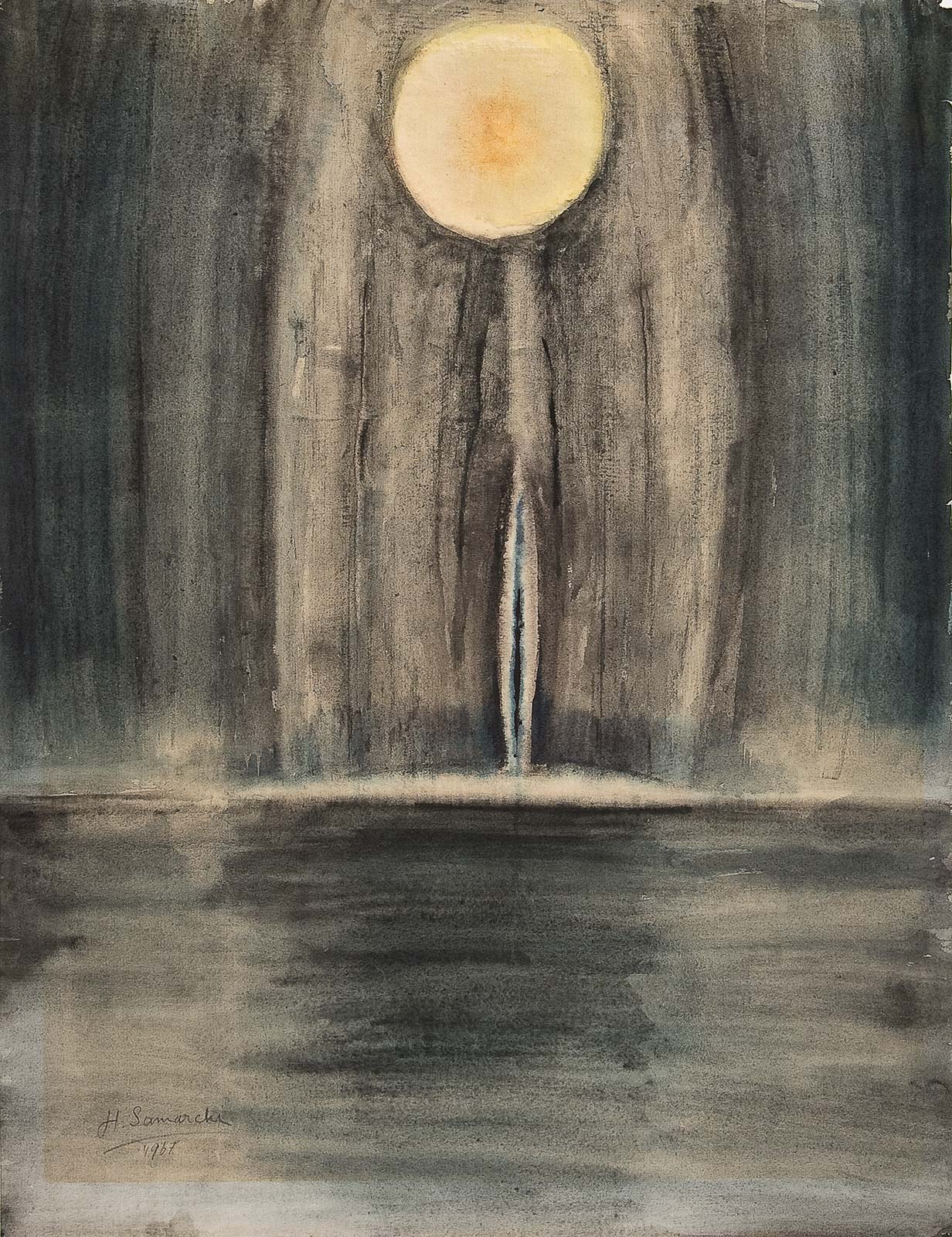
Rafa, Salim and Hashim’s return to Baghdad, after their stay in Lisbon, prompted a turning point in printmaking and marked the start of Op Art on the Iraqi art scene. Hashim Samarchi is thus regarded as the pioneer of Op Art in Iraq and a prominent artist printmaker of his generation.
Movement, from 1968, was part of this new paradigm in Samarchi’s work. On his arrival in Lisbon, the artist explored an idyllic nature, far removed from the abstract register originating in the GRAVURA workshops, and in contact with artists such as his ‘friend’ Fernando Calhau, who attended the same course. Sea Image or Untitled, both dated 1968, reveal a new world produced in the technique of aquatint.

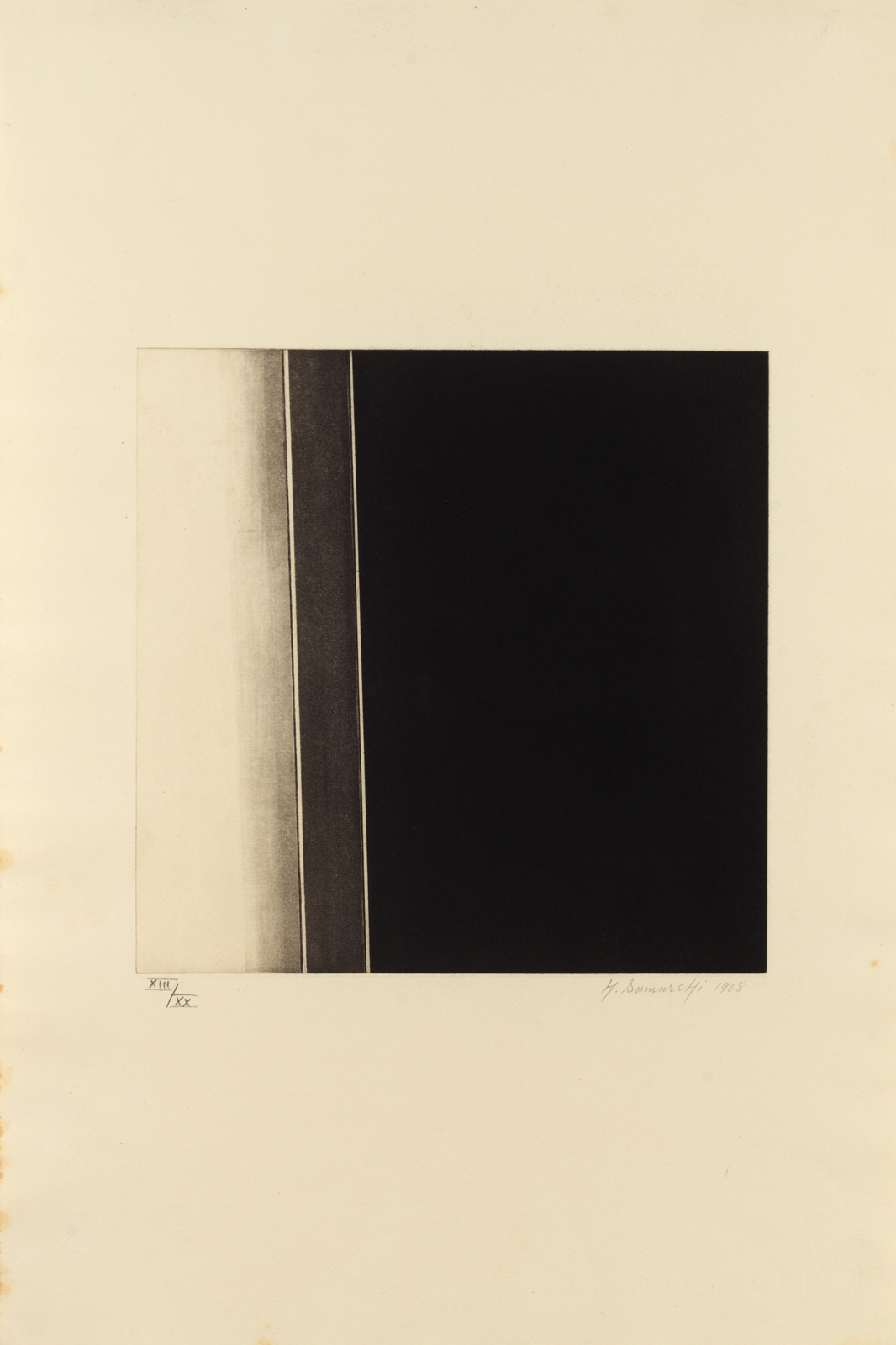
In response to our challenge, Samarchi gave a statement on these works in 2018: “[…] I started studying the dot and the configurations it leaves behind during its path and movement. The dot therefore becomes the line, and the line in its turn becomes the shape, and repetition of shape becomes the object of the artwork and the impact these shapes have on the vision of each viewer; the same goes for colour, its gradation and combination with other colours, since a different combination of colours produces a different impression on the viewer.”
The optical simulation that Samarchi initiated in Lisbon had an unmistakable influence on his future as an artist. After leaving for London in 1981, where he still lives with his family, he worked for a further decade in the studio of Dia Al-Azzawi (Baghdad, 1939), regarded as one of the pioneers of modern Arab art.
In 2018, fifty years after his stay in the Portuguese capital, the Calouste Gulbenkian Foundation invited Hashim Samarchi to the opening of the exhibition Art and Architecture between Lisbon and Baghdad, which I organised with Ricardo Agarez. Shown for the first time in the Foundation’s spaces were works from the CAM collection belonging to its Iraqi scholarship artists.
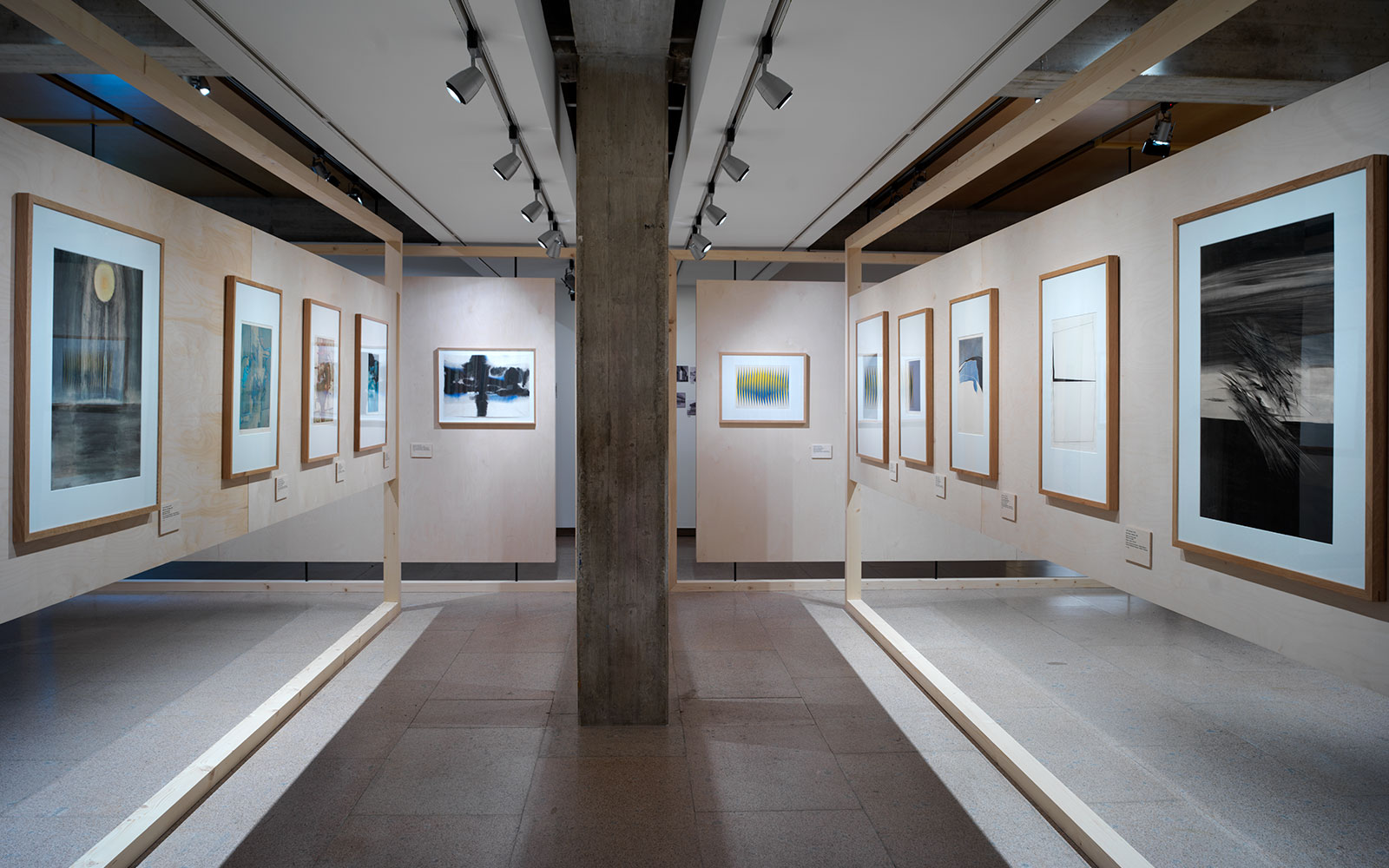
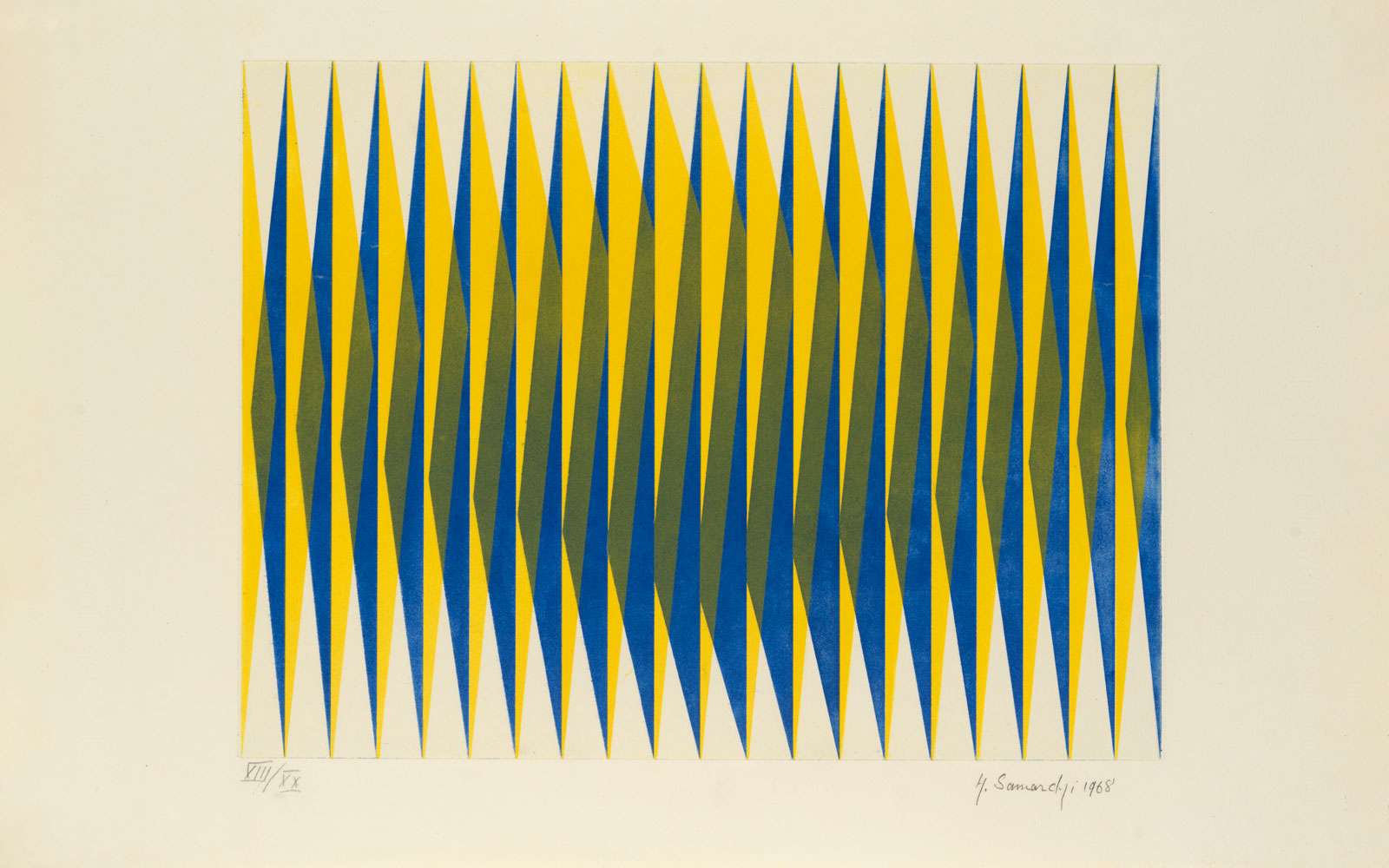
The first hypnotising prints of optical illusions, where multiplied lines and colours merge, take on new forms and an almost inevitable three-dimensional aspect, culminating in Samarchi’s most intense period of artistic production.
In 2019, the CAM Collection received from Samarchi the sculpture-relief Movement Composition No. 2 in shades of green and red, formed of four large modules, which combine various exhibition possibilities.
Here we revive those relationships, which endure, without borders.
Patrícia Rosas
Curator of the CAM
Curators’ Choices
The curators of the CAM reflect on a selection of works, which include creations by national and international artists.
More choices